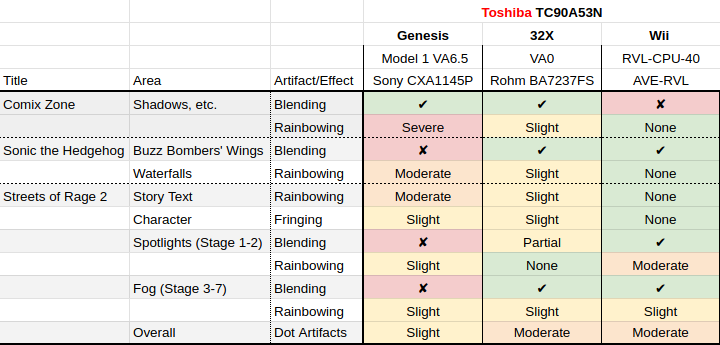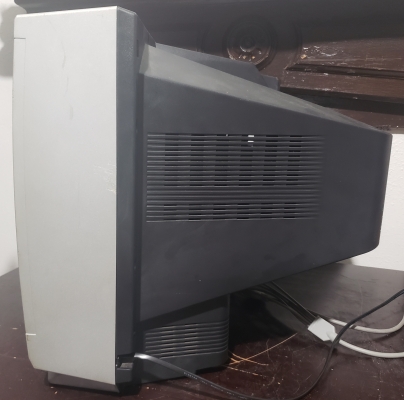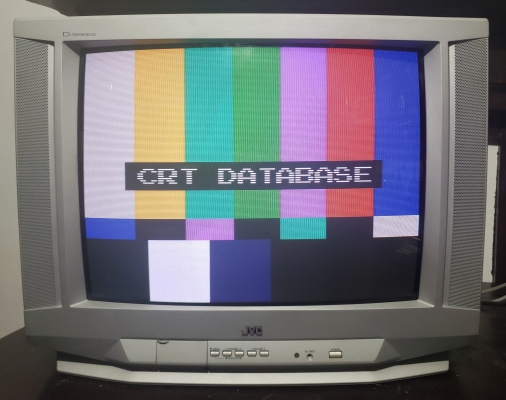Summary
The debut model of the smallest size of the D-Series.
Literature
Notes
Red push is an imbalanced increase in red saturation that was designed to have a rosy appeal to consumers rather than matching a reference color space.
To disable red push for composite and S-Video:
- Select Input 1 or 3
- Select the video status of Standard, then enter the service menu by pressing Sleep Timer on the remote and then Video Status and Display at the same time.
- Press Vol+ to enter the Picture Section
- Press CH- until you reach 34. R Y GAIN and then press Vol- to set it to zero
- Press CH- until you reach 38. CD MATRIX and then press Vol- to set it to zero
To disable red push for component:
- Select Input 2
- Select the video status of Standard, then enter the service menu by pressing Sleep Timer on the remote and then Video Status and Display at the same time.
- Press Vol+ to enter the Picture Section
- Press CH- until you reach 35. CMP R Y and then press Vol- to set it to zero
- Press CH- until you reach 39. CMP CD M and then press Vol- to set it to zero
Note that these four service menu options above are only adjustable in Standard mode, but will be carried over to Theater and Choice.
In order to store changes made to the the picture settings in the user menu:
- Compare the Video Status of Standard and Theater to determine if you would like a white balance closer to reference 6500K (Theater), or to have a much more blue white balance (Standard)
- Select either Standard or Theater (as this will be the basis for your picture settings which will be saved as Choice)
- Press Menu, then CH- until you reach "SET VIDEO STATUS" and press Vol+
- Make your changes, and then select "SAVE AS CHOICE"
- After that, you can select video status Choice to recall your settings.
Selecting Choice will have the same picture settings for all inputs. If you would like to customize the picture settings per input, then the way to go about this is to set the Video Status to Standard, and customize each source in the service menu, as detailed here.
Composite 240p Performance, Disabling Vertical Edge Enhancement
by Eli Krause
For composite decoding this set uses a Toshiba TC90A53N, a 3-line digital comb filter. One beneficial feature of this comb filter is its "1-line color dot interference reducer circuit". Depending on the console/revision, dot artifacting ranges from slight to moderate, and blending effects may be broken. Using an external notch filter to decode composite instead (such as is available in a RetroTink 2X, 5X, etc.) and sending that to the component input would blend all dithering patterns and remove nearly all dot artifacts.

Just as velocity scan modulation increases the contrast along horizontal edges, vertical edge enhancement increases the contrast along vertical edges. To reduce this to its minimum, the high signal sent to pin 17 of the comb filter must be brought low which can be achieved by removing the resistor leading to that pin. On the AV-20D202 it is R239. On the AV-32D502 it is R247.
Gallery






 This work is licensed under a
This work is licensed under a